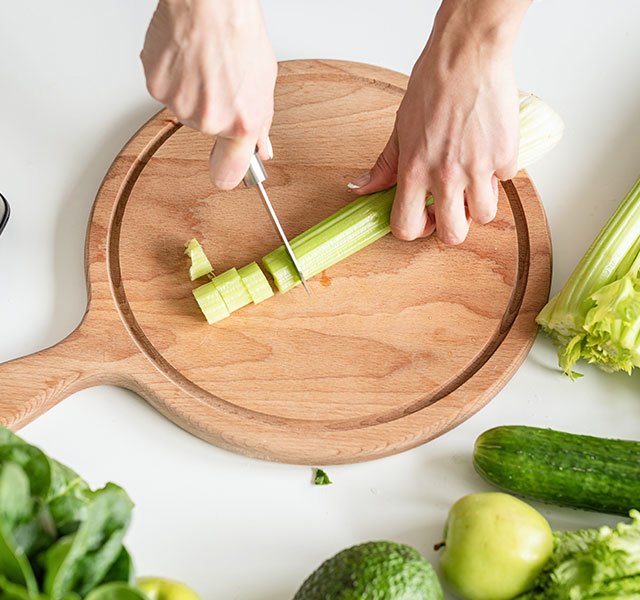When it comes to losing weight, the goal is to burn more calories than you consume. The idea behind eating so-called "negative-calorie foods" is that you'll be able to eat as much of them as you want without gaining weight.
How do these miraculous foods lighten your calorie burden? In theory, the process of digesting them burns more calories than they contain. But according to Antigone Senn, RDN, a registered dietitian at Henry Ford Health, the reality is slightly more complex.
Negative-Calorie Foods Explained
Digesting food and absorbing nutrients account for about 10% of the energy you expend in a day. Very low-calorie foods like iceberg lettuce, cucumbers, celery and leafy greens provide a proportionately small amount of calories, but they still require energy to digest.
Based on that equation, it seems possible that very low-calorie, high-fiber foods could create a calorie deficit, but there's no scientific data to support that hypothesis. Plus, foods that might fall into a negative-calorie category are made up primarily of water, which means they don't require much energy to digest and process.
Whether these non-starchy vegetables go into the negative or not, Senn says they're a wise choice for weight management. "Many fruits and vegetables are very low in calories while also being dense in fiber and water, so they fill you up," she says. "A serving of vegetables is about 1 cup raw, ½ cup cooked or 2 cups of leafy greens.”
A bonus: Low-calorie, non-starchy fruits and vegetables act as "prebiotics," meaning they feed the good bacteria in your gut, which improves the health of your microbiome.
Favorites include:
- Apples
- Berries
- Broccoli
- Carrots
- Cauliflower
- Celery
- Cucumbers
- Grapefruit
- Kale, spinach and other leafy greens
Focus On Fiber, Not Calories
Whether foods are negative-calorie or not, high-fiber produce is a smart option for any healthy diet. Fiber-rich foods require more time and energy to digest, so they're better equipped to stave off hunger than their processed counterparts. Standout fiber sources include:
- Berries
- Apples
- Whole grains
- Leafy greens
- Nuts and seeds
"But even with these foods, there's no way to eat yourself thin," Senn says. "Building muscle is the only way to boost your metabolism."
The bottom line: Eating more whole foods (especially fiber-rich fruits and vegetables) and avoiding highly processed foods can enhance your weight loss efforts and support your overall health — as long as you don't expect digesting those foods to take the place of your workouts.
Subscribe today to receive weekly emails of our latest tips.
To find a doctor or registered dietitian at Henry Ford, visit henryford.com or call 1-800-436-7936.
Antigone Senn is a registered dietitian nutritionist who specializes in nutrition counseling and health coaching at Henry Ford Health’s Center for Health Promotion and Disease Prevention.



